You may have heard the term “commissioning” in relation to buildings and construction, but do you really understand what it means? Simply put, commissioning is the process of verifying and documenting that building Owners get the building systems they bought, that they are operating in accordance with current occupancy and usage, and that they work. We can add lots of caveats and details, but when you get to the heart of the matter, this is what counts.
Why is Commissioning Important?
Commissioning has a significant impact on the built environment which affects all of us in ways we often do not consider.
Energy and Carbon Reduction
Buildings account for 40% of the total energy usage and more than 30% of the Greenhouse Gas Emissions in the US. The Commissioning Process makes sure that buildings only use the energy they really need, thus maximizing the efficiency of operations.
Workforce Efficiency
While real estate costs are considered a necessary expense in the business world, the impact of the space on people’s work productivity is often overlooked. The rule of thumb is that for every dollar spent on utilities, you spend 10 dollars on rent and 100 dollars on payroll. Using this metric, you can see how important it is that everyone in the space is comfortable, has good lighting, and has good air quality.
Occupant Health
Since we spend so much time in buildings, it is important that they do not negatively impact our health. Whether we are in a residence, school, hospital, or office, the indoor air quality, including outside air levels, filtration quality, and potential air pollutants, impacts us all.
As the only service solely focused on representing the Owner’s interest in building operations during a construction project or an existing building “tune-up”, Commissioning Providers have a significant impact on the world around us, the corporate bottom line, and our personal health and well-being.
How does Commissioning work?
Commissioning Providers are best contracted directly to the Owner through a quality-based selection process. Depending on the situation, an Owner’s Representative, architect, or property manager may solicit qualifications or proposals on behalf of the Owner with the final contract between the Owner and Commissioning Provider. This is the only way to ensure that the Commissioning Provider maintains their true third-party independent status and accountability back to the building Owner.
Once a Commissioning Provider is selected and contracted, the real fun begins!

New Building Commissioning
The construction of new buildings and major renovations of spaces (any renovation that includes replacement of mechanical, electrical, and plumbing systems) are complicated processes with many competing priorities.
For Commissioning Providers, getting involved at the start of this process means that they can hear and understand the Owner’s priorities firsthand, document those focused on energy and building operations, and begin the project as a team member alongside the Design Team. In addition, since in the design phase the building is only “on paper,” the Commissioning Provider can have a significant impact for a very low cost by reviewing the design and making recommendations.
For example, if a valve recommended for easier maintenance is recommended in the design phase, you are essentially going to get that one valve for “free.” That same recommendation made during construction would require a change order and those costs add up. A change order after the project is built means you’re paying for the cost of the materials, the cost to drain and fill the system, the cost of everyone’s compounded overhead and profit, plus the cost of the down time, and on and on.
Once the project is in construction, the Commissioning Provider transitions to the field-work portion. Using Commissioning meetings as the venue, the Commissioning Provider works with the Construction Team in a quality assurance role using checklists to document installation, field reviews to monitor the installation, functional testing to verify operations, and Owner follow up to qualify the training of the maintenance personnel.
Throughout the process, the focus of the Commissioning Provider remains on the Owner and their operations team: Can I access the equipment for maintenance, repair, and replacement? Do the sequences of operation work as I expected? Are the building schedules consistent with the programs taking place? Am I operating as efficiently as possible to meet the energy targets?

Existing Building Commissioning
Existing building commissioning services such as retro-commissioning are focused on improving operations with low-to-no-cost energy conservation measures. The Owner and Commissioning Provider recognize and document at the very outset of the process that the building’s current usage is not the same as it was when it was originally designed and occupied, and that this variance provides opportunities for optimization. In addition, sensors, controlled devices, and even maintenance quality all tend to drift over time requiring a focused process to “reset the clock” and re-calibrate the building.
By using a phased process that first identifies general areas of opportunity and then progresses into specific areas of focused hands-on testing and analysis, the Commissioning Provider can affect significant improvement in building operations with minimal investment by the Owner. Additionally, since the opportunities identified for detailed investigation are all presented to the Owner with estimates of cost, savings potential, and payback, the Owner can make decisions that best impact their operations. Specifically, an Owner may decide to pursue an issue that affects comfort and employee satisfaction even though there is little energy savings because it has a long-term, positive ramifications for their employees.
Common retro-commissioning opportunities include adjusting HVAC systems to match the current building usage including ventilation rates and occupancy schedules, optimization of chilled water plants, upgrade of light fixtures and lighting controls, calibration of the various building automation system sensors and devices, identification of non-working terminal units, and resolution of difficult building operations problems or sources of complaint.
Next Steps
Interested in learning more? Contact an expert Commissioning Provider at Colliers Project Leaders to discuss your buildings or projects and learn how we can help.





